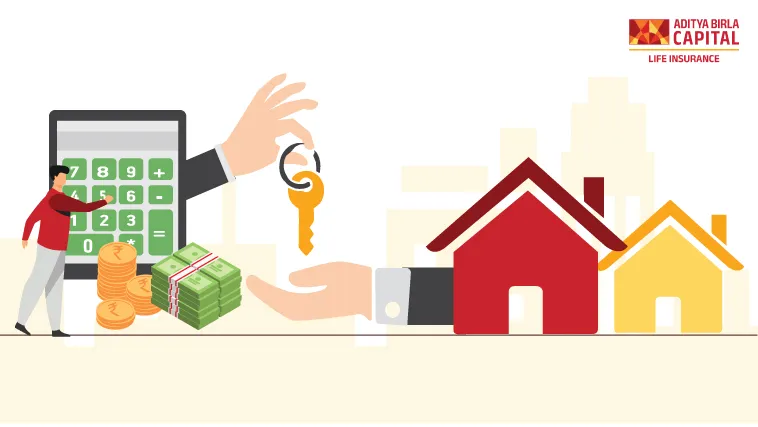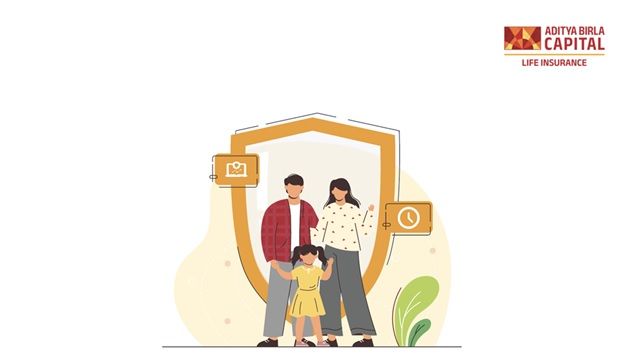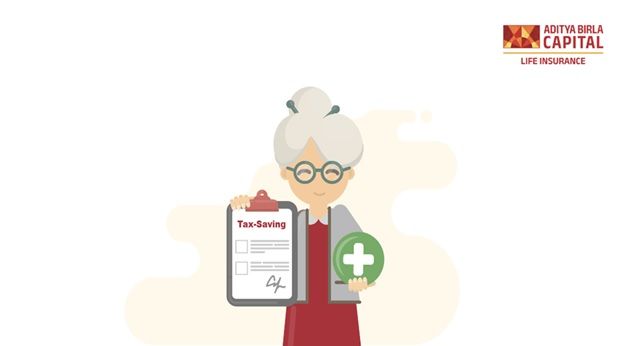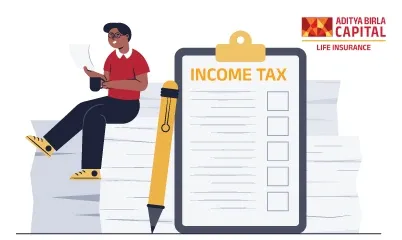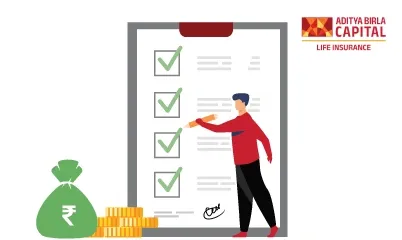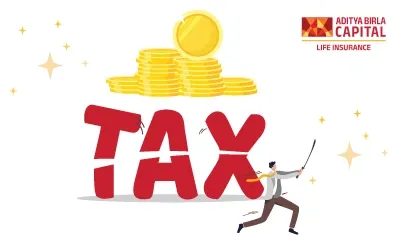Ever wondered how you can make the most out of your house rent expenses, especially when it comes to taxes? If you're paying rent, there's good news for you in the form of House Rent Allowance (HRA). It's a component of your salary that can significantly reduce your taxable income. But how does it work, and more importantly, how can you maximise your benefits whether you're self-employed or working for a company? Let's dive in and unravel the essentials of HRA, ensuring you're well-informed to make savvy financial decisions.
What is HRA (House Rent Allowance)?
HRA, or House Rent Allowance, is an allowance paid by employers to employees to cover the cost of renting a home. It's part of the salary package, structured to provide tax benefits* to employees who live in rented accommodations. The purpose of HRA is not just to assist employees with their rent but also to offer them a way to save on taxes. The amount of HRA you're eligible for depends on various factors, including your salary, the rent you pay, and your location of residence (as rent varies from city to city).
HRA for Self-Employed
If you're self-employed and wondering how you can avail of similar benefits, there's something for you too. While you may not receive an HRA from an employer, you can still claim deductions for the rent you pay under Section 80GG of the Income Tax Act. Here are the conditions and limits you need to know:
- You should not own a residential property at the place of your employment or business.
- You should not be receiving HRA from any other source.
- The deduction under Section 80GG is the least of the following:
- Rent paid minus 10% of adjusted total income
- ₹5,000 per month
- 25% of adjusted total income
This provision ensures that self-employed individuals can also benefit from tax deductions on their housing expenses.
HRA for Salaried Individuals
For salaried individuals, HRA provides a golden opportunity to reduce taxable income. The exemption you can claim is the minimum of the following three conditions:
- Actual HRA received from your employer.
- Rent paid minus 10% of salary (salary includes basic salary, dearness allowance if applicable, and any commission based on fixed percentage on sales).
- 50% of salary if living in metro cities (Delhi, Mumbai, Kolkata, or Chennai) or 40% for non-metro cities.
To claim HRA exemption, you need to submit rent receipts or the rental agreement as proof of rent payment to your employer. It's a straightforward process that can lead to significant tax savings.
How to claim an HRA exemption?
Claiming HRA exemption is a straightforward process for salaried individuals. Here’s how you can do it:
-
Submit Rent Receipts: Provide your employer with rent receipts as proof of rent payment. These receipts should ideally include details like the landlord’s name, address, rental period, and the amount of rent paid. Make sure the receipt has a revenue stamp if the rent exceeds a certain amount, typically ₹5,000 per month.
-
Rental Agreement: Along with rent receipts, submitting a copy of your rental agreement can strengthen your claim, especially if it provides details not covered in the receipts.
-
PAN of Landlord: If the annual rent exceeds ₹1,00,000, it's mandatory to furnish the PAN of the landlord. If the landlord doesn’t have a PAN, a declaration to this effect from the landlord along with the rental agreement and receipts can be submitted.
-
Declaration Form: Fill out the declaration form provided by your employer for HRA exemption, including all necessary details of the rent paid.
-
After submission, your employer will account for the HRA exemption while computing the tax deducted at source (TDS) from your salary.
How to calculate HRA Exemption?
Calculating HRA exemption involves understanding which part of your HRA is exempt from tax. The exemption amount is the minimum of the following three calculations:
- Actual HRA received from your employer.
- 50% of the basic salary (plus dearness allowance, if any) for those living in metro cities (Delhi, Mumbai, Kolkata, Chennai) and 40% for those in non-metro cities.
- Rent paid over 10% of basic salary (plus dearness allowance, if any).
The formula to calculate HRA exemption is designed to benefit employees by allowing them to claim the highest possible deduction, thus reducing their taxable income.
Can I Claim HRA and Deduction on Home Loan Interest?
Yes, you can claim both HRA exemption and deduction on home loan interest under certain conditions:
-
Living in Rented Property While Owning Another: If you own a house but live in a different city for work and pay rent, you can claim HRA for the rent paid and a deduction under Section 24 for interest on the home loan for your owned house.
-
Renting Out Owned Property: If you own a property and have rented it out while you live in a rented property, you can claim HRA for the rent you pay and also claim the interest paid on the home loan of the owned property as a deduction.
This dual benefit is permissible under the Income Tax Act, allowing taxpayers to optimise their tax savings effectively. It’s essential to keep all relevant documents, such as home loan interest statements, rent receipts, and rental agreements, handy for tax filing and verification purposes.
HRA Tax Benefits* Claimed in Certain Special Cases
HRA exemptions are not just limited to straightforward scenarios. There are several special cases where you can still claim HRA benefits, such as:
-
Paying Rent to Family Members: If you're paying rent to a parent or spouse, you can claim HRA exemption provided the transaction is legitimate and reflected in their income tax returns. However, renting from a spouse is often scrutinised more closely by tax authorities.
-
Both Spouses Claiming HRA: If both spouses are working and paying rent, both can claim HRA exemption proportionate to the rent they're contributing, as long as they can furnish individual rent receipts.
-
Temporary Absence from Rented Home: If you're temporarily away from your rented home (e.g., for a business trip) but still paying rent, you're eligible to claim HRA for the period.
-
Multiple Rent Agreements in a Year: If you’ve moved houses within a year, you can claim HRA for multiple rent agreements, provided you submit all relevant documents for each.
Date for Filing the ITR and Claiming the HRA Tax Exemption
The due date for filing the Income Tax Return (ITR) usually falls on July 31st of the assessment year for individual taxpayers not subject to audit. For claiming the HRA exemption, ensure you’ve submitted all necessary rent receipts and documents to your employer within the financial year to have the exemption accounted for in Form 16. If you missed submitting these proofs to your employer, you could still claim HRA exemption directly on your income tax return before the ITR filing due date.
HRA Exemption Rules & Tax Deductions
Understanding the rules and deductions related to HRA can help you maximise your tax benefits*. Here are key points to remember:
-
Documentation is Key: Keep all rent receipts, lease agreements, and bank statements (if rent is paid via transfers) as proof of rent payments.
-
Exemption Limit: The exemption amount is limited to the minimum of actual HRA received, 40% (or 50% for metros) of salary, and actual rent paid minus 10% of salary.
-
Pro Rata Benefit: If you’re paying rent for only part of the year or your HRA component changes, the exemption is calculated on a pro-rata basis.
-
Declaration of Landlord’s Income: If you’re paying rent to a family member, ensure they declare the rental income in their tax returns to avoid scrutiny.
By keeping these aspects in mind and planning your rent payments and document submissions accordingly, you can effectively reduce your taxable income through HRA exemptions. Whether you're salaried or self-employed, understanding how to navigate the specifics of HRA can lead to significant tax savings, reinforcing the importance of informed financial planning in managing your taxes efficiently.
How to Claim HRA When Living With Parents?
Claiming HRA while living with parents is a smart way to utilise your HRA benefit effectively. Here’s how you can do it:
-
Formal Rent Agreement: Create a formal rent agreement between you and your parents. This agreement should specify the rental terms, including the monthly rent, which should be a reasonable market rate.
-
Pay Rent Regularly: Pay the rent to your parents every month preferably through bank transfers or cheques. This creates a traceable record of payment.
-
Parent's Income Declaration: Your parents need to declare the rent received as their income and pay taxes on it, if applicable, under the head "Income from other sources."
-
Submit Documents to Employer: Submit rent receipts and the rent agreement to your employer to claim HRA exemption.
By following these steps, you can legitimately claim HRA exemption while financially contributing to the household expenses.
How to Claim Deduction Under Section 80GG?
Section 80GG allows individuals not receiving HRA from their employer to claim a deduction for rent paid on their accommodation. To claim this deduction:
-
Fulfil Eligibility Criteria: Ensure you, your spouse, or your minor child does not own residential accommodation at the place of your employment or business.
-
File Form 10BA: Submit Form 10BA with details of payment of rent. This declaration must confirm that you have paid rent for the house and that no other benefits of the section are claimed.
-
Calculate Deduction: The deduction under Section 80GG is the least of:
● Rent paid minus 10% of total income
● ₹5,000 per month
● 25% of total income
● Include in ITR: Claim this deduction while filing your Income Tax Return (ITR) under the relevant section.
Documents Required to Claim HRA Tax Exemption
To claim HRA tax exemption, you need to furnish the following documents:
-
Rent Receipts: Provide rent receipts for the months you’re claiming HRA. Receipts should ideally have details like the landlord’s name, address, rent amount, and the period of rent. For large payments, ensure receipts are stamped.
-
Rental Agreement: A copy of your rental agreement that mentions the terms of your lease, rental amount, and duration.
-
Bank Statements: If rent payments are made via bank transfers, bank statements can serve as additional proof.
-
Landlord’s PAN: If your annual rent exceeds ₹1,00,000, it's mandatory to submit the PAN of your landlord. If the landlord does not have a PAN, a declaration to this effect may be required.
-
Form 10BA: For those claiming deduction under Section 80GG, a duly filled and signed Form 10BA is required.
Preparing these documents in advance and keeping them ready for submission can ease the process of claiming HRA exemption, ensuring you benefit fully from the available tax deductions.
HRA Exemption: How to Apply?
Applying for HRA exemption is a simple process that can lead to significant tax savings. Here’s a step-by-step guide to ensure you apply correctly:
-
Collect Rent Receipts: Gather your rent receipts for the period you're claiming the exemption. Ensure these receipts are signed by your landlord and include all necessary details such as amount, duration, and landlord's name and address.
-
Prepare Rental Agreement: If possible, have a formal rental agreement in place that outlines the terms of your tenancy. This document serves as a strong proof of your rental arrangement.
-
Submit to Employer: Submit the collected rent receipts and rental agreement to your HR or accounts department. Do it before the end of the financial year or as per the deadline given by your employer to include the exemption in Form 16.
-
Declaration Form: Fill out any declaration form or document required by your employer to claim HRA exemption.
-
Adjustments in Tax Deductions: Once your HRA exemption claim is processed by your employer, it will be reflected in your TDS (Tax Deducted at Source) for the remaining months of the financial year.
-
Self-Declaration for Non-Salaried: If you don’t receive HRA or miss submitting proofs to your employer, you can still claim the exemption directly on your income tax return. Ensure you keep all documents handy for any future inquiries from the tax department.
Conclusion
HRA exemption is a beneficial provision for employees to reduce their taxable income through rent payments. By understanding how to efficiently apply for HRA exemption, individuals can maximise their take-home salary and optimise tax savings. The key to a successful claim lies in maintaining proper documentation and adhering to the submission deadlines. Whether you are paying rent to your parents or living in rented accommodation away from your owned home, the HRA exemption can significantly lower your tax liability. Remember, tax planning is an integral part of financial health, and taking proactive steps like claiming HRA exemption is a smart move towards achieving financial wellness. Always keep abreast of the tax laws as they evolve to ensure you are leveraging every opportunity to save on taxes legally.

